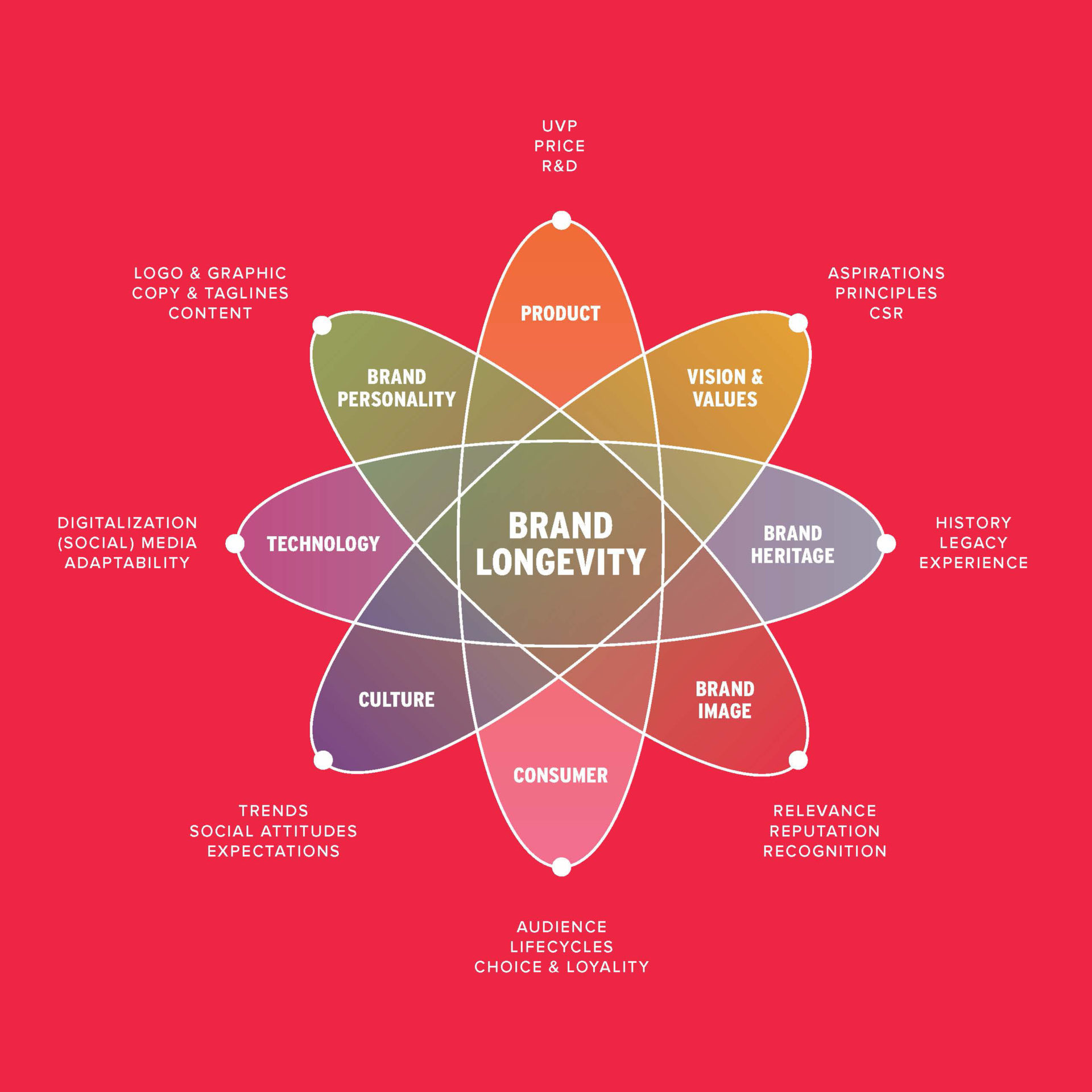It’s a crossroad every longstanding brand comes to: the past meeting the future. Given time and cultural capital (a robust identity, a solid reputation, and a history within the marketplace), heritage brands will inevitably need to determine how best to adapt to current and future trends and technologies. But how can brands adapt without losing their hard-won identities? It’s all about balance.
Our research on Brand Longevity has shown that, in the brand ecosystem, Brand Heritage and Technology make up two ends of a vital spectrum, and are two of the most important drivers of longevity. Brand Heritage can often be inflexible, as it’s shaped by the established values and actions of brands. On the other hand, Technology is highly flexible and ever-changing, which makes it ripe for adaptation and innovation. Although they may seem at odds on the surface, it’s better to think of them as a team, maintaining a compromise between staying in the past (risking stagnation) and hurtling into the future (risking long-term irrelevance).

“Brand Heritage and Technology reflect the actions, both past and ongoing, that define the legacy and future of brands. They are elements that are continually shaped over time by key brand decisions, and which form the central tension of continuity and change behind brand longevity.”
Technology is just one component brands need to adapt to in order to maintain relevance in a modern world. Shifting cultural patterns, consumer values, and marketplace trends can also significantly impact the trajectory of a brand. Many businesses have proven adaptability to the present and future is not only compatible with their heritage, but a vital part of their long-term success. These companies have found key ways to improve the balance between staying true to their heritage and anticipating the future needs and expectations of consumers.
Consistency is still king, but leave room for creativity and reinvention
Brands looking to better navigate the dynamic of heritage and innovation should begin by taking stock of their current reputation for reliable value. Innovation is not about reinventing the wheel, but rather making adjustments in order to adapt a brand to the modern demands and values of consumers.
LEGO, for example, has reliably made sturdy toy bricks that seem to defy short-term trends within the industry. This consistency of product is a nod to its incredibly strong brand heritage, but the 89-year-old titan has still uncovered ways to innovate within its corporate walls rather than on the factory floor. In recent years, LEGO has pledged new commitments in the areas of child welfare and environmental sustainability, two areas that reflect both current and future consumer values.
In comparison, streaming giant Netflix has found ways to reinvent itself in its relatively short history, not by reimagining the brand itself, but by changing its product offering. Although the company initially began as a mail-in DVD rental service, it pivoted quickly to digital streaming, accurately pinpointing the trajectory of the at-home media market. As a brand, Netflix has remained consistent, encouraging consumers to enjoy being at home by utilizing their services, while changing the way those services are delivered to meet market demand.
The combination of reliability and reinvention these brands have utilized have proven that consistency is vital to a brand’s longevity, and innovation can come in a variety of forms. By listening to the demands of their audiences, brands can evaluate the need to evolve their company profile, product, or both to better reflect today’s world and further secure their long-term success.
Use technology and media strategically
Balancing the past with the future requires investing in and exploring technology and media, particularly social media, as it is often an indicator of trends and changing values in the marketplace and at large. This is particularly true for heritage brands looking to appeal to younger demographics.
Despite their decades-long history and beloved fan club in the Boomer, Gen X, and Millennial generations, both Barbie and LEGO have successfully incorporated digital technology into their brands to appeal to Gen Z and youth of today. Mattel has introduced a digital dreamhouse, a vlogger series featuring Barbie and her friends (recently revamped as high school teens to enhance relatability), and numerous mobile apps and games to the brand, resulting in exponential growth. Meanwhile, LEGO has incorporated consumer feedback into their designs, frequently releasing audience-created kits and dedicating a space to fan creations on its website.
Paint brand Sherwin-Williams has also incorporated technology into a longstanding, and often slow-moving, industry—and managed to give consumers a fun experience along the way. Their website’s Room Visualizer tool (also accessible on mobile and tablet devices) allows users to paint preselected “blank” rooms in an AR-type environment, or even upload personal photos to test out new colors in real-world settings. In addition, their social media presence has allowed the brand to innovate strategically and broaden their audience. The brand has found particular success on Instagram, using their inherently visual product to showcase mood board-style posts, while also tapping into current trends such as astrology to appeal to younger demographics.
While it’s important for a brand to consider their heritage (history, legacy, experience) in order to remain true to who they are, it’s also critical to balance that against technology and other cultural trends in order to remain relevant and evolve in a constantly shifting landscape. By allowing brand heritage and innovation to work in tandem, companies across industries can not only increase their relevance, but ensure their longevity as well.